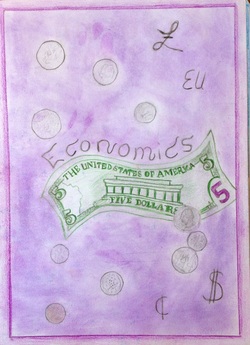
Just as we have explored the physical worlds of Geology and the Physical Sciences, and the scientific laws that help explain our experiences with these two areas of study, so too we looked at the social world of money, and its role in the development of our society. We examined self-sufficiency, how bartering evolved and created a bond of dependency between consumer and producer, and how bartering economies in turn played a part in specialization of labor, expertise in the work force, and thus a better quality of goods and services, and of life! The students developed a decent understanding of the term “economy” in general, and we examined the role of money as both a currency and also a replacement for bartered goods and services. We discussed the different types of money in our country, how it is made and designed, and how it flows through our economy (at a basic level). Students were quite interested in why things cost so much, and so we talked a little bit about the costs associated in our trade with other countries where most of the goods we love to buy come from, and why a thing like a shoe can cost so dang much money. We went on a little tangent and learned a little bit about Fort Knox (so interesting!), and also how U.S. currency was backed by gold before we left the gold standard. We then “dissected” a bank, and saw how important its role was in the flow of money in an economy, and its role in helping people like me buy a house and go to college—something I would have never been able to do on my own. The concepts of debt, credit, interest (paid and earned), savings, loans, and taxes were further developed through stories and practical examples. We also practiced calculating tips for food servers, interest, and commission percentages, much of which has also been practiced in the arithmetic class.